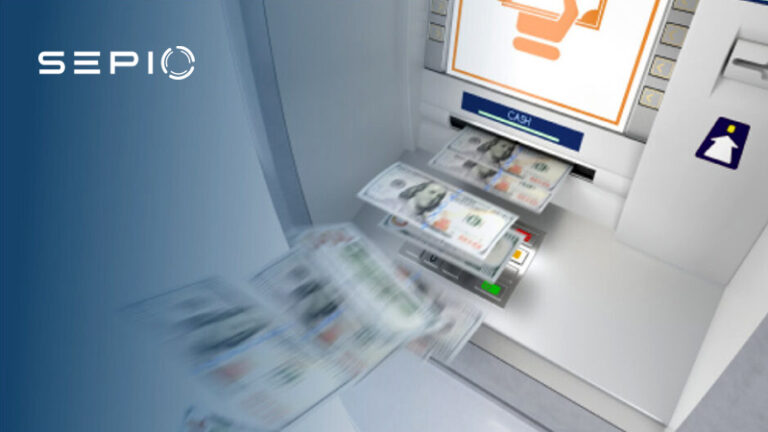ATM black box attack involve connecting unauthorized devices to ATMs bypassing security measures. Typically resulting in unauthorized access to cash. It is a type of malicious cyber attack in which the attacker has little or no prior knowledge of the internal workings of the target system. The attacker treats the system as a black box. Observing its inputs and outputs to understand its behavior and find vulnerabilities that can be exploited.
In this article, discover the intricacies of how hackers execute ATM black box attacks. Delve into the ways Sepio Asset Risk Management’s commercial platform safeguards your hardware devices through unparalleled physical layer visibility, ensuring effective black box risk prevention.
Money flies out of the machine, and the winners smile. However, before you jump up from your seat to cash in on the thousands of dollars pouring out, remember that this situation results from an black box Attack.
ATM jackpotting attacks enable hackers to exploit ATMs and illegally withdraw large sums of cash. While these attacks are more common in Europe, they present a significant threat globally. Hackers often carry out these schemes using simple devices in what are known as ATM black box attacks. If you’re curious about how these methods work, read on. You’ll soon uncover the details of how criminals “hit the jackpot” without stepping foot in Las Vegas.
Black Box Attack: Bypassing Security to Access Cash Dispensers
An ATM consists of two main parts: the cabinet and the safe. The cabinet serves as the main body and houses the ATM computer, which connects to all the other devices. Fortunately, the cabinet remains largely unprotected, allowing easy access. The latter is more secure and contains only the cash dispenser and cash acceptance module. Yes, the cash dispenser is the most important part in this whole operation. Thankfully you will only need access to the cash dispenser cable, which is located outside the safe, to successfully execute this attack.
By gaining access to the top box of the cash machine, you will be able to bypass the main board communications. And additionally, disconnect the physical dispenser from the ATM PC core. This is when you attach the peripheral device (the black box) directly to the dispenser whereby you can initiate cash dispensing commands.
This approach is common is cybersecurity, especially in scenarios where attackers do not have access to the internal system’s structure. Black box attacks often involve techniques like fuzzing or reverse engineering. The attacker analyzes the system’s behavior to deduce its internal workings.
This approach is common in cybersecurity, especially in scenarios where attackers do not have access to the internal system’s structure. Black box attacks often involve techniques like fuzzing, reverse engineering, and intrusion detection. The attacker analyzes the system’s behavior to deduce its internal workings.
Implementing robust computer-security measures, such as real-time intrusion detection and continuous monitoring, is crucial for protecting ATM systems from black box attacks and other cybersecurity threats.

The Silent and Lucrative ATM Black Box Attacks
The best part is that you will not leave a trace on the target’s payment terminal. As the attack relies on the outputs produced by the ATMs in response to your inputs. Furthermore, you can disable checks that verify legitimate access, as well as other cyber security mechanisms, to go undetected (ATM Cyber Security).
The perfect time to do this would be in your lunch break as this will only take you 10 minutes. This leaves more than enough time to treat yourself to a nice meal at Nobu, what with all that extra cash burning a hole in your pocket.
The icing on the cake when it comes to ATM black box attacks is that almost 70 per cent of ATMs are vulnerable to them. So that ATM you walk past every day is most likely a great target (ATM Jackpotting).
If the Kardashians are making money from being famous, then you can make money in an unconventional way, too. Who’s got time for a 9-5 nowadays anyway?
Black Box Risk Prevention
Sepio’s patented technology provides a holistic approach to managing assets at the physical layer. Focusing on identifying and mitigating cyber risks, especially concerning black box risk prevention and endpoint security.
Traditional cyber security solutions often lack this vital physical layer visibility, neglecting hardware security. This results in a network vulnerable to threats such as network implants, rogue devices, and Denial-of-Service (DoS) attacks operating within the physical layer. Moreover, it adeptly identifies counterfeit peripherals as authentic Human Interface Devices (HIDs).
Black Box Cyber Security: Sepio’s Asset Risk Management
Sepio leads in ensuring that IT, OT, IoT, and peripheral infrastructures are resilience against black box attacks. This comprehensive approach is vital for organizations seeking to protect their hardware and data security against increasingly nuanced and dangerous cyber threats like data breaches and ransomware attacks.
See every known and shadow asset. Prioritize and mitigate security risks. Evolving technologies and cloud security threats demand constant vigilance from security experts and security professionals.
Schedule a demo. It will help you understand how to use Sepio’s patented technology to gain control of your asset risks. Visit our Youtube channel, and Captain Rogue Device Mitigation – Episode #1 – You’re Fired.






